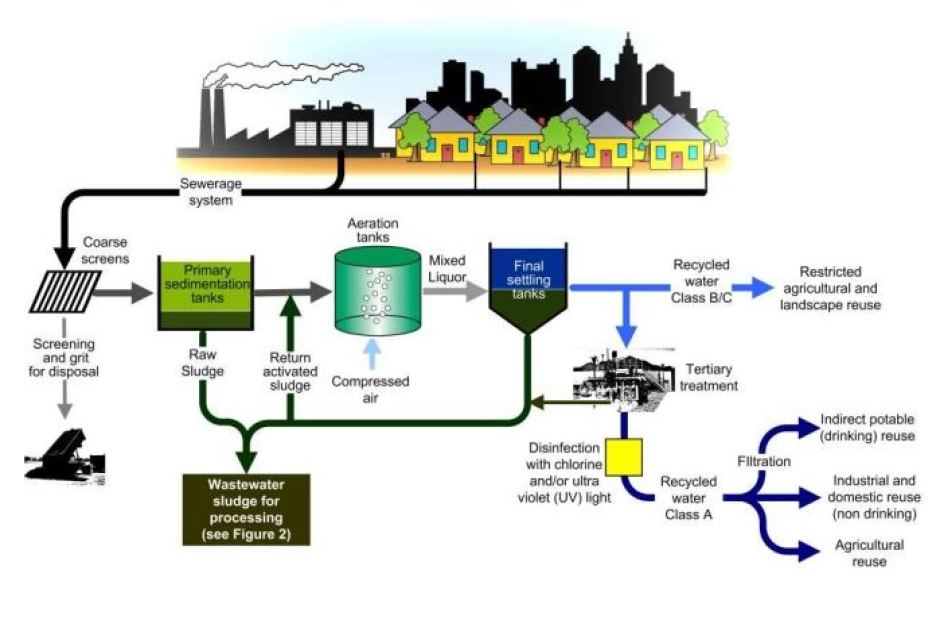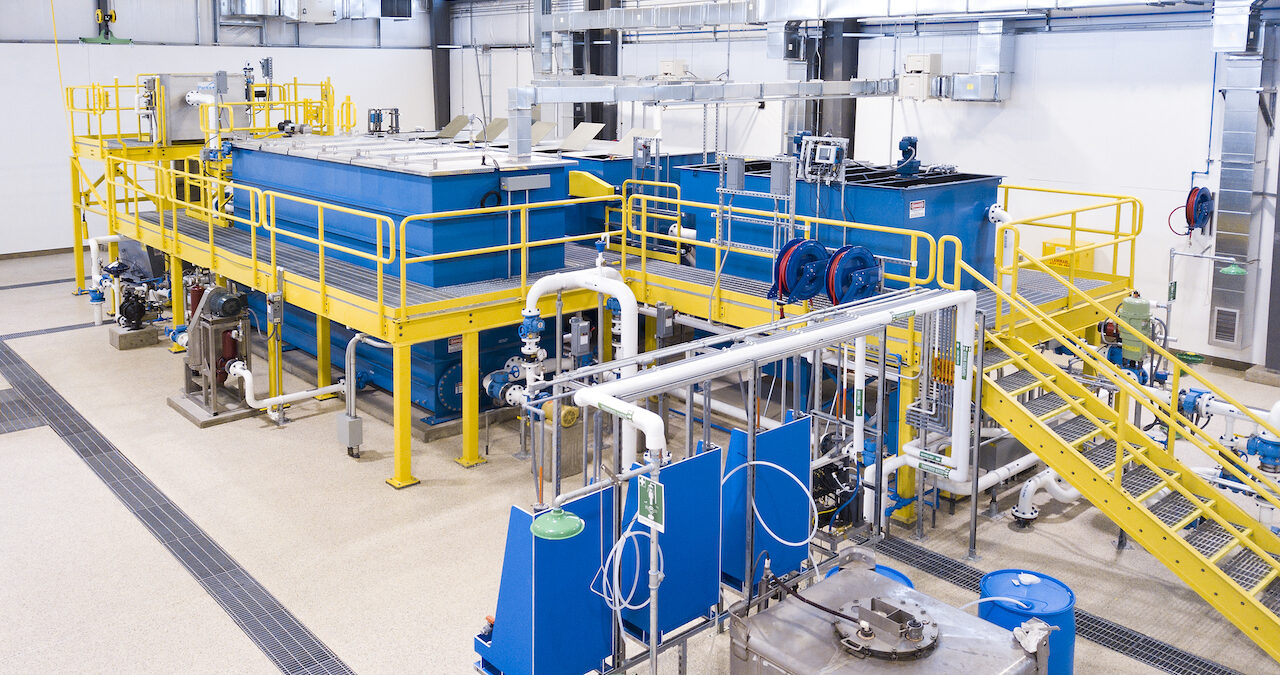Industrial Waste Water Treatment-- Cutting-Edge Technologies for Water Filtration
Industrial Waste Water Treatment-- Cutting-Edge Technologies for Water Filtration
Blog Article
Difficulties and Solutions in Industrial Waste Water Treatment
The treatment of commercial wastewater offers a multifaceted array of obstacles, varying from stringent regulative compliance to the complexities of expense monitoring and technical constraints. The variability in waste composition even more complicates the efficiency of traditional treatment methods, usually resulting in intensified operational expenditures. However, arising remedies such as sophisticated oxidation processes and ingenious funding designs reveal pledge in addressing these concerns. As markets grapple with the demand for sustainable methods, the inquiry remains: what approaches will ultimately cause an equilibrium in between conformity, cost-efficiency, and environmental obligation?
Regulatory Conformity Obstacles
Exactly how can industrial centers navigate the complex landscape of regulatory conformity in wastewater therapy? The regulatory structure governing wastewater monitoring is multifaceted, typically differing by jurisdiction and kind of industry. Facilities must abide by government, state, and regional regulations that dictate effluent top quality standards, discharge limits, and surveillance needs. Failure to comply can result in serious fines, consisting of fines and operational shutdowns.
To effectively handle these conformity challenges, facilities ought to implement durable surveillance and reporting systems that ensure real-time information collection and evaluation. Normal audits and risk evaluations can recognize possible conformity spaces, enabling proactive adjustments in therapy processes. Staff member training programs concentrating on governing understanding and best practices are vital to promote a society of conformity within the company.
Additionally, involving with governing companies can supply beneficial insights and clarify unclear laws. Facilities might likewise gain from talking to ecological specialists that focus on wastewater therapy conformity, making sure that they remain informed of progressing regulations. By taking on these methods, commercial centers can not only fulfill conformity demands however likewise improve their functional performance and environmental stewardship.
Cost and Financial Barriers
Browsing governing compliance in wastewater therapy usually presents considerable economic difficulties for commercial centers. The expenses associated with executing essential therapy technologies, keeping compliance with rigid regulations, and handling operational expenses can be intimidating. Many companies encounter high initial capital investment for the building or upgrading of wastewater treatment plants, which might stress spending plans, specifically for tiny and medium-sized business.
Additionally, continuous operational prices, including labor, maintenance, and chemical inputs, contribute to the economic burden. The changability of varying power prices and the potential need for added investments to satisfy developing guidelines aggravate these financial stress. In a lot of cases, the lack of monetary incentives or assistance from federal government bodies makes it much more difficult for companies to validate investments in sophisticated therapy systems.
Furthermore, the economic stability of wastewater therapy options is commonly examined, especially for industries with tight earnings margins. It is vital for commercial facilities to discover economical approaches, such as embracing cutting-edge financing choices, engaging in collaborations, and leveraging emerging innovations that can help mitigate these financial obstacles while making sure conformity with ecological standards.

Technological Limitations
Various technological restrictions prevent the efficiency of commercial wastewater treatment procedures. One significant difficulty is the insufficiency of existing treatment modern technologies to resolve complicated impurities. Numerous traditional techniques, such as turned on sludge and chemical you could check here precipitation, fight with the removal of emerging toxins, consisting of microplastics and drugs. This limitation usually causes the discharge of inadequately treated water, which can have detrimental ecological effects.
Furthermore, the scalability of therapy technologies postures an obstacle. While some sophisticated approaches, like membrane layer filtration or advanced oxidation, show promise in regulated environments, their execution on a larger range can be prohibitively costly and technically difficult. Maintenance and operational complexities better make complex the fostering of these systems, specifically for smaller sized industries with restricted technical experience.
The assimilation of real-time tracking technologies also continues to be insufficient in several treatment facilities. Without effective surveillance systems, drivers can not sufficiently examine therapy performance or spot possible failings, bring about irregular effluent high quality. Attending to these technical constraints through study and development, alongside investment in cutting-edge services, is crucial for boosting the efficiency of commercial wastewater treatment and guaranteeing regulatory conformity.
Irregularity in Waste Make-up
In the world of industrial wastewater treatment, the irregularity in waste make-up presents an awesome difficulty. Industries produce wastewater with diverse characteristics, influenced by variables such as production procedures, basic materials, and operational practices. This diversification makes complex the treatment process, as traditional systems frequently have a hard time to effectively deal with the vast array of reference toxins present.
For example, wastewater from food processing may consist of high degrees of raw material, while effluents from chemical manufacturing could include heavy metals and harmful substances. This variation demands versatile treatment techniques to make sure compliance with ecological policies and secure public wellness. Additionally, variations in waste composition can happen over time, affected by adjustments in manufacturing schedules, upkeep activities, or the introduction of brand-new items.

Cutting-edge Therapy Solutions
Innovative therapy options are crucial for attending to the complexities of industrial wastewater monitoring. Traditional techniques typically drop short in effectively getting rid of a large variety of contaminants, specifically in centers with diverse effluent streams. Recent advancements focus on incorporating innovative modern technologies to improve therapy efficiency and sustainability.
One promising strategy is making use of advanced oxidation processes (AOPs), which take advantage of effective oxidants to deteriorate organic pollutants. AOPs, consisting of photocatalysis and ozonation, can dramatically decrease hazardous substances and improve effluent high quality. Furthermore, membrane layer bioreactor (MBR) modern technology has gained grip, incorporating organic treatment with membrane layer filtration, resulting in premium effluent and reduced impact.
Another innovative solution is the execution of resource recuperation systems. Techniques like anaerobic digestion not only deal with wastewater but additionally produce biogas, which can be taken advantage of as a renewable resource source. Furthermore, the fostering of expert system and artificial intelligence designs can maximize treatment procedures by predicting variants in wastewater composition, thus enhancing functional efficiency.
These innovative remedies not only address regulative conformity yet also promote ecological sustainability, leading the way for a much more reliable and resistant commercial click here to find out more ecological community.
Verdict
Finally, attending to the difficulties of commercial wastewater treatment needs a diverse approach that integrates governing compliance, cost management, and technological improvements. Innovative solutions, such as advanced oxidation processes and membrane bioreactor innovation, offer paths to boost therapy performance. Moreover, real-time surveillance systems and collaborative involvement with regulatory agencies can advertise sustainable practices while alleviating financial stress. A dedication to constant renovation in therapy methods will inevitably add to the effective administration of commercial wastewater and environmental management.
The therapy of commercial wastewater offers a complex range of challenges, varying from rigorous governing compliance to the details of expense management and technological restrictions. Industrial Waste Water Treatment.Browsing regulatory conformity in wastewater therapy usually provides significant monetary difficulties for commercial facilities. Attending to these technical constraints with study and development, alongside financial investment in innovative services, is important for enhancing the effectiveness of industrial wastewater therapy and making certain regulatory conformity
Wastewater therapy facilities need to invest in durable surveillance systems and flexible therapy modern technologies qualified of suiting differing influent attributes.In conclusion, dealing with the obstacles of industrial wastewater therapy requires a multifaceted method that incorporates regulative conformity, cost management, and technical advancements.
Report this page